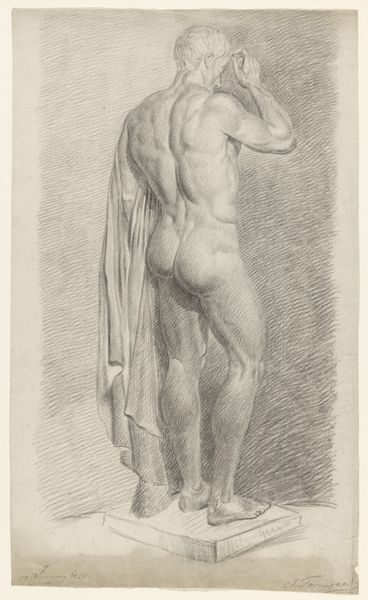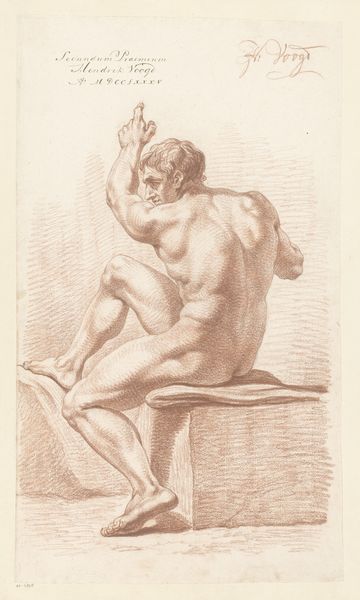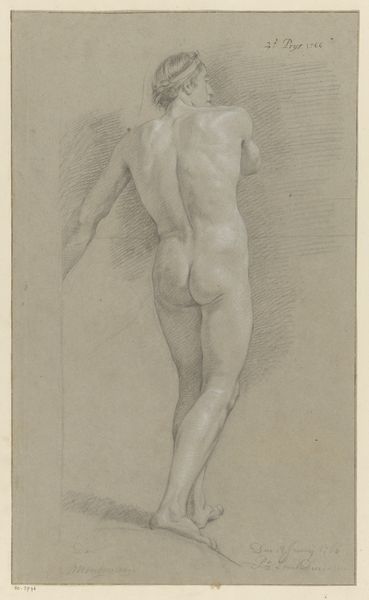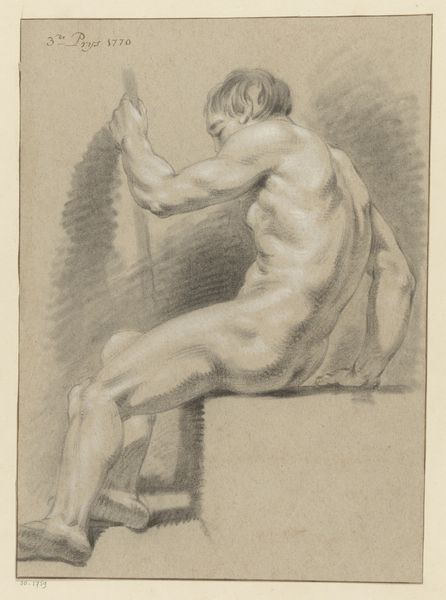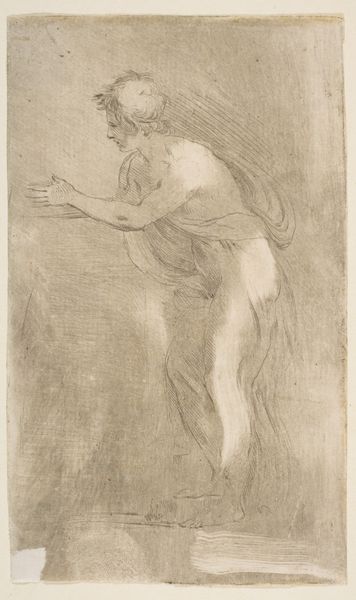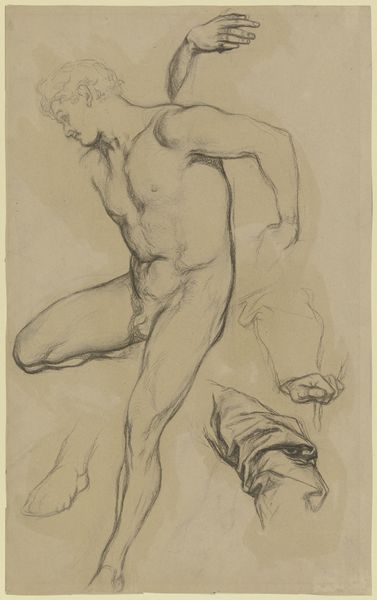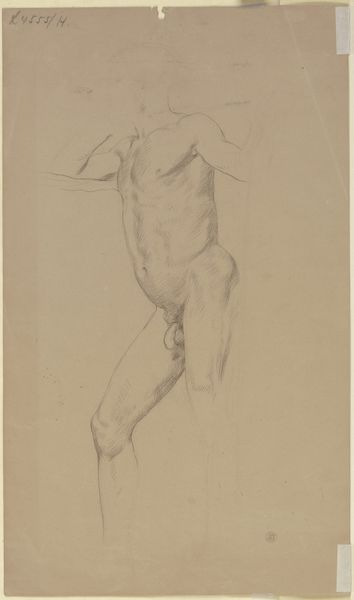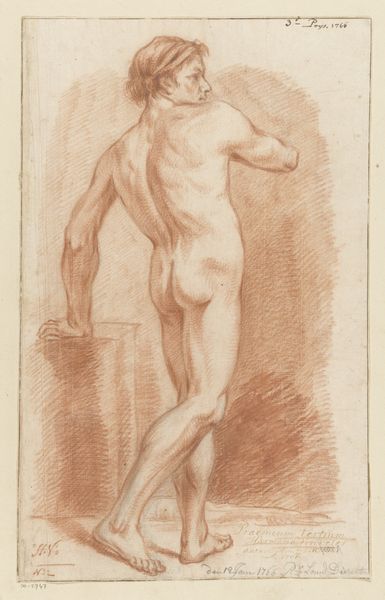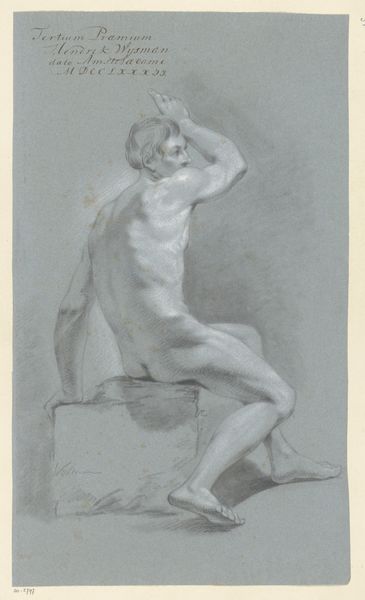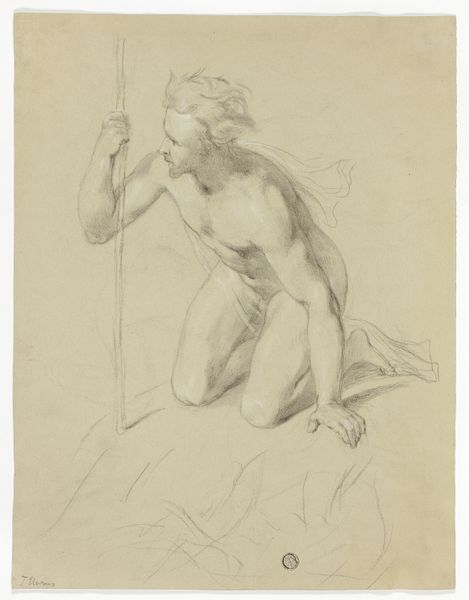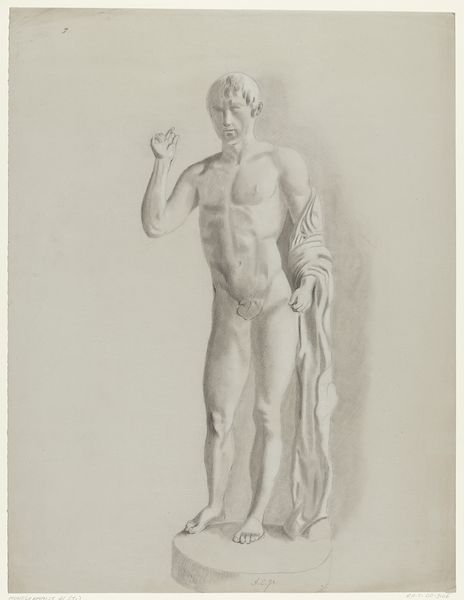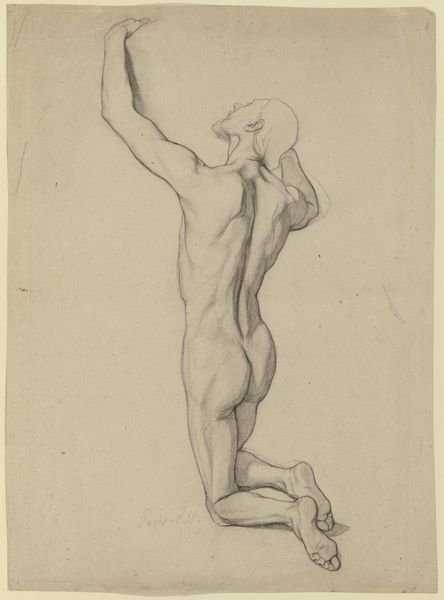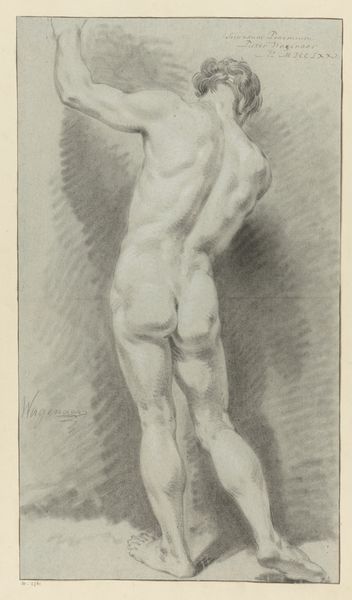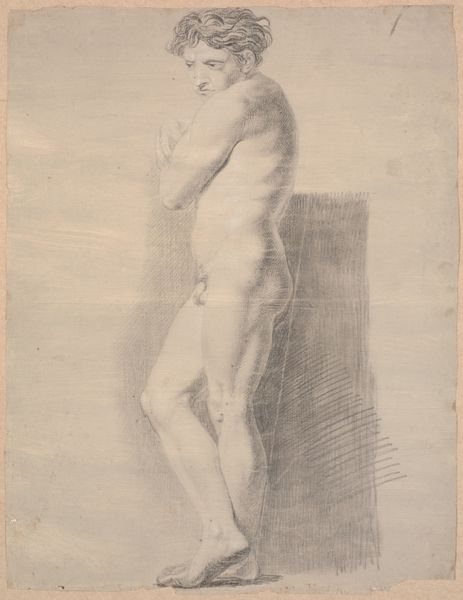
drawing, dry-media, pencil
#
drawing
#
charcoal drawing
#
figuration
#
dry-media
#
portrait reference
#
pencil drawing
#
pencil
#
portrait drawing
#
academic-art
#
nude
Dimensions: height 617 mm, width 460 mm
Copyright: Rijks Museum: Open Domain
Curator: Ah, here we have "Standing Male Nude, Seen from the Back" by Monogrammist AC (Jr.), estimated to be from around 1800 to 1900. It's rendered in pencil and charcoal, primarily. Editor: There's something melancholic about the pose, isn't there? Almost a sense of yearning. The grayscale palette definitely adds to that feeling. Curator: Indeed. The artist skillfully used dry media, pencil and charcoal in this figuration drawing. I imagine the artist labored over each muscle, emulating a sculptural form. Note how the drapery seems almost weightless compared to the figure's anatomy. Editor: Speaking of labor, it’s interesting to think about the paper itself – where it was made, who processed it, and how its cost might have affected the artist's decisions. A drawing like this shows off an idealized form, but also depends on very concrete production chains and social norms around male depiction and art consumption in the 19th Century. Curator: Yes, and the subtle shading suggests the figure is turning slightly to look back, a private moment made public. This work serves as a powerful reference, reminiscent of academic art, reflecting traditional notions of beauty and form. Editor: True, but seeing all that beautiful musculature meticulously rendered makes me also wonder: how did the sitter feel, holding that pose? What was the dynamic in the studio that day? It hints at all those unseen processes of creating a drawing. Curator: An intimate question indeed. While AC (Jr.) remains somewhat elusive, the artist certainly managed to capture a timeless grace with very economical use of line. There's a tension between the fragility of the medium and the robust subject depicted. Editor: I agree. By focusing on the details of making – the pencil strokes, the types of materials used, the relationship between artist, model, and commissioner – we get a much richer, less sanitized story about how the work came to exist. Curator: It's like we are seeing both the dream and the hard work woven together. It shifts how we understand the piece and makes you wonder even more about its journey! Editor: Exactly, from graphite mine to museum wall. Makes me see this image in a totally fresh light.
Comments
No comments
Be the first to comment and join the conversation on the ultimate creative platform.
